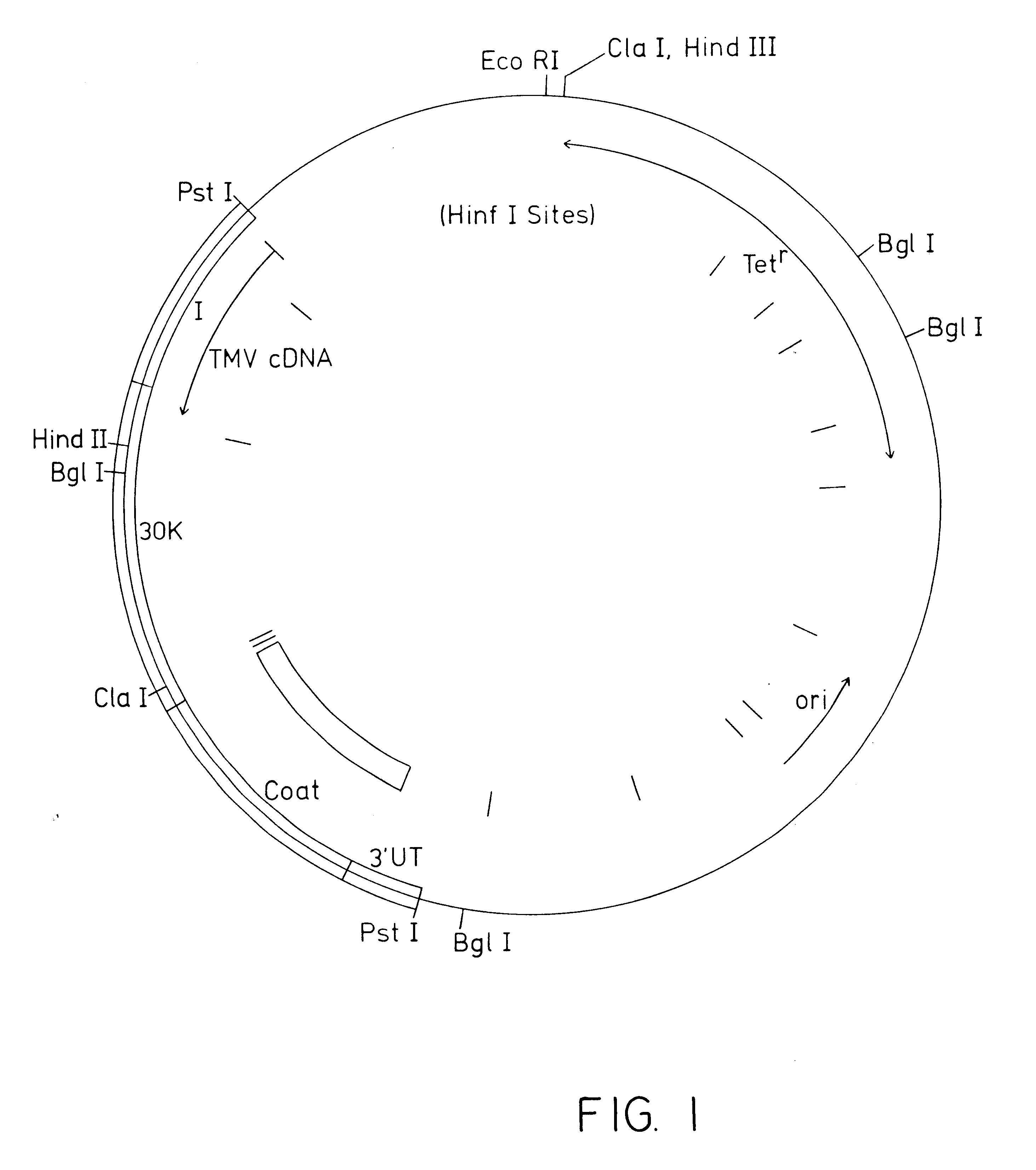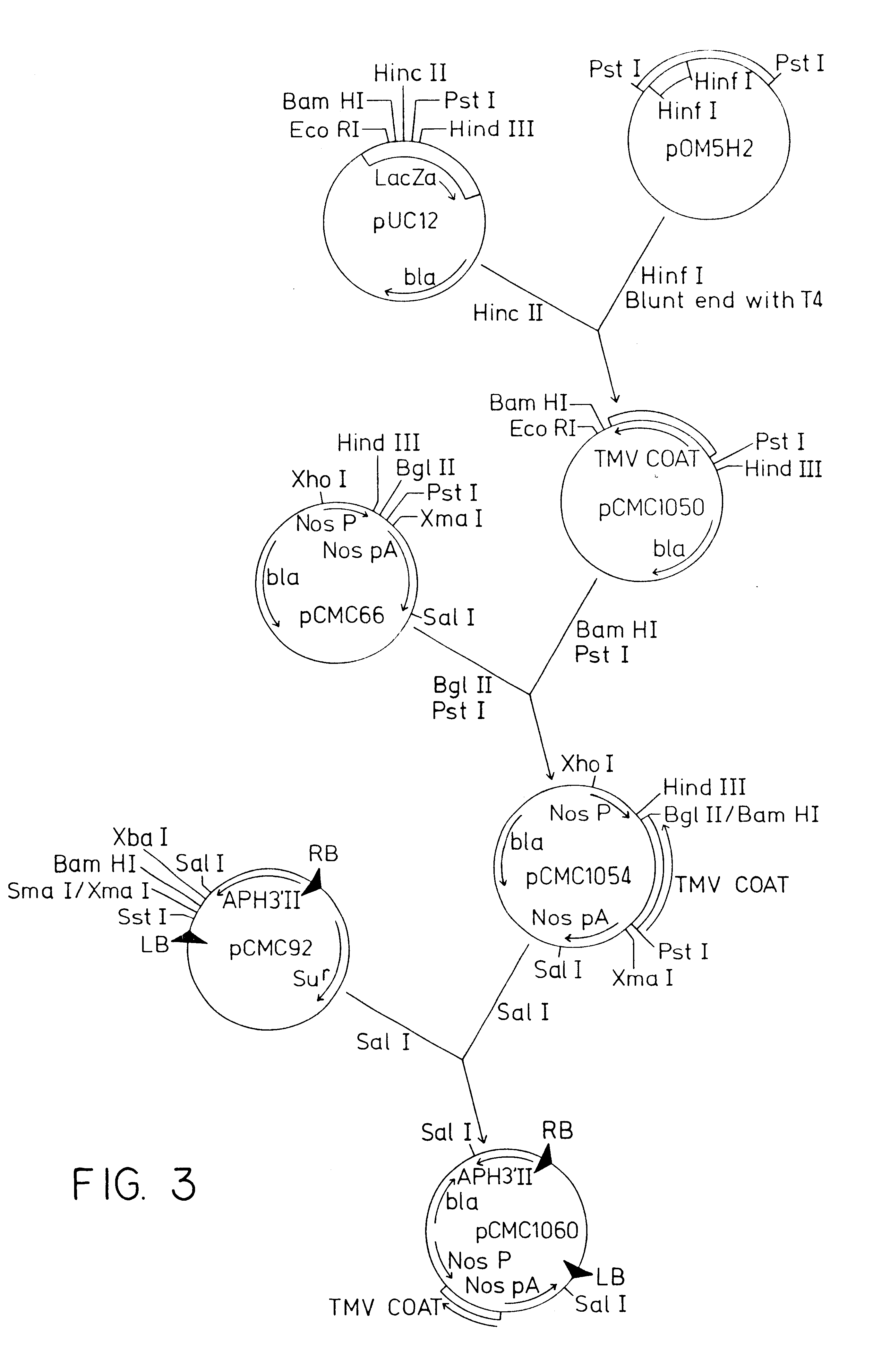Effecting virus resistance in plants through the use of negative strand RNAs
a technology of negative strands and virus resistance, which is applied in the field of effecting virus resistance in plants through the use of negative strands, can solve the problems of difficult regenerating many plant species from callus culture or protoplasts
- Summary
- Abstract
- Description
- Claims
- Application Information
AI Technical Summary
Problems solved by technology
Method used
Image
Examples
example 1
Disease Resistance Tobacco Mosaic Virus RNA
This example is directed toward the inhibition of the cellular disease process triggered by invasion of the tobacco mosaic virus. Tobacco mosaic virus (TMV) is a plant positive strand RNA virus whose RNA is translated and replicated as part of the disease process in the infected cell. The positive strand RNA of TMV is injected into the cytosol of an infected plant cell. Two genes on the positive strand RNA are then translated to produce two protein products which trigger, in turn, the production of a negative strand complement of the TMV RNA. The complement strand serves as a template for positive stand replication while two more subgenomic positive strand RNAs are translated into other proteins, one of which is the coat protein. The replicated positive strand RNAs are packaged by the coat proteins to make new TMV.
The strategy of this example is to transform plant cells so that they will constitutively transcribe negative RNA strands which ...
example 2
Inhibition of Endogenous Gene Expression Nopaline Synthase
In demonstrating the ability to inhibit expression of an endogenous gene, tobacco plants were selected carrying an endogenous gene for nopaline synthase (Nos). This gene is not normally present in tobacco plants, but has been introduced, through genetic manipulation, into a line of somatically normal, fertile, stable tobacco plants which transmit the intact nopaline synthase gene to their progeny through normal genetic inheritance (Barton et al., Cell 32: 1033-1043 (1983)). Thus, for the purposes of demonstrating this principle, this gene and its expression can be considered endogenous in this plant line. To demonstrate inhibition of the phenotypic expression of this model endogenous gene, a chimeric gene was constructed which directs the synthesis of a negative RNA strand complementary to a large portion of the middle region of the nopaline synthase messenger RNA (mRNA). The fragment chosen was 824 base pairs long. This chim...
PUM
| Property | Measurement | Unit |
|---|---|---|
| Electrical resistance | aaaaa | aaaaa |
| Gene expression profile | aaaaa | aaaaa |
Abstract
Description
Claims
Application Information
 Login to View More
Login to View More - R&D
- Intellectual Property
- Life Sciences
- Materials
- Tech Scout
- Unparalleled Data Quality
- Higher Quality Content
- 60% Fewer Hallucinations
Browse by: Latest US Patents, China's latest patents, Technical Efficacy Thesaurus, Application Domain, Technology Topic, Popular Technical Reports.
© 2025 PatSnap. All rights reserved.Legal|Privacy policy|Modern Slavery Act Transparency Statement|Sitemap|About US| Contact US: help@patsnap.com



